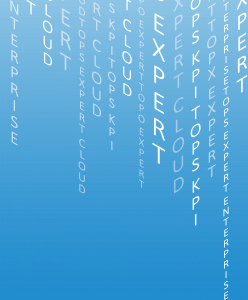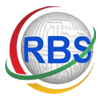How Any Terminal can Benefit from the Cloud
Why is Cloud Adoption Slower in the Port Sector than Other Industries?
Case Study - Terminal in Hamburg, Germany using a Cloud TOS Since 2017
CLOUD SOLUTION IMPACT
CONCERNS
Changing the way things usually are done can daunting. Migrating an entire Terminal Operating System (TOS) into the cloud incites conclusions of it being a massive change – a transformation that is difficult, complicated, and costly. These premature misconceptions create resistance which fends off innovation and sustainability, which are all necessary to progress in the future.
There have been a few instances of terminals adopting a TOS in the cloud but disclosed to do worse than when it had its TOS infrastructure on-premise. Later revealed, the TOS required terminal operators purchase hardware to accommodate their decentralized server infrastructure. As a result, the TOS software architecture, by definition, cannot be classified as a cloud solution. Instead, it is implicitly an on-premise solution hosted on virtual machines forcing terminal operators to buy hardware from cloud providers which not only compromises cloud properties but is even more costly than the typical TOS. Consequently, the industry had already formed negative opinions regarding SaaS solutions and their ability to deliver or perform efficiently. In combination to being in a mature sector that develops constrictions on innovation, fears of accepting change and adopting a SaaS solution had climbed further.
PURPOSE
The most significant reasons why an on-premise TOS was reconfigured to inherit a cloud infrastructure:BENEFITS
A TOS in the cloud is a powerful tool that can secure:


Why is Cloud Adoption Slow in the Industry?
One of the latest movements established in the industry, which has induced higher efficiencies in operations and expanded its target market to terminals of virtually any size, is the Cloud Terminal Operating System (TOS). Harry Nguyen, founder and CEO of Realtime Business Solutions (RBS), highlights “cloud TOS benefits are transparent, which brings us to question why the adoption in our sector is moving so slow?”
Cloud computing is a powerful tool, requiring in-depth knowledge and specialized expertise to incorporate correctly into a TOS. Translating the technology into architecture and software posed as such a challenge that some early adopters integrated a fake cloud TOS, which exposed them to various vulnerabilities such as misalignment between results and expectations. Drawbacks undermining real cloud technology advantages derive from terminal operators failing to differentiate a forged cloud TOS from a pure cloud TOS.
Therefore, four key factors to detect a fake cloud are:
Rejecting the cloud TOS may deprive avenues that present more efficient methods to running terminal operations, which not only degrades a terminal’s market position but drives a downturn in the economy. With a newfound understanding of the critical detectors, it is easy to differentiate a fake from a true cloud TOS solution, ensuring you develop a deeper understanding of its incredible potential.
CLOUD CASE STUDY
Terminal in Hamburg, Germany using a Cloud TOS Since 2017
ABOUT
A small inland terminal in Hamburg, Germany, implemented RBS TOPS Expert Cloud in 2017. Before the Go-Live, procedures were executed manually without a TOS, whereby the primary source of software used to maintain data was through Lotus, then Outlook, and Excel. These methods proved insufficient and caused double work, mainly due to the increasing needs of integration and electronic communication requested by customers and authorities. To be readily prepared for a prospective future, the terminal realized it needed a TOS.
DECISION
Factoring in the modest annual throughput, limited budget, and uncertain growth, the small terminal decided TOPS Expert Cloud be the most viable TOS. The choice to employ RBS’ cloud TOS is attributable by two aspects – it requires little to none upfront costs and follows a cost-effective pay-per-use model. Since prices tightly link to container volume, it inherently reduces financial risks.
IMPROVEMENTS
TOPS Expert Cloud has empowered the terminal through heightened reliability in data, process autonomy, and procedure efficiency. Many areas were liable to manual work before TOPS Expert Cloud since nobody knew precisely the placement of a container in the yard other than the RST operator. Also, with TOPS EDI system integrated into the cloud TOS, the terminal can now exchange automatic electronic, facilitating a direct link to customs. The terminal is further able to establish long-term partnerships with its customers and liners due to EDI integration. Streamlining the planning process and strengthening communication with shipping liners has helped both the office team and dispatchers focus on their core functions as opposed to the former time-consuming process of (double) data entry.
Another area of efficiency experienced since employing TOPS Expert Cloud is the increase in quality of documentation, reporting, and communication, which has reduced a substantial amount of phone calls or manually updating authorities’ systems as a double effort. The cloud TOS has also provided them with a higher capacity to handle container information efficiently.
The terminal has leveraged the benefits of the TOS due to the systems architecture truly adhering to all cloud characteristics. Despite its size, it was able to adopt a TOS due to the pay-per-move structure, leverage the same benefits, and experience the exact qualities a large terminal would exhibit from using a cloud-based TOS. Therefore, TOPS Expert Cloud can drive success without discriminating against current terminal size and throughput.
CONNECT WITH US
UPCOMING EVENT
CONTAINER TERMINAL AUTOMATION CONFERENCE
Our team from RBS EMEA will be attending the PTI Container Terminal Automation Conference (CTAC) so don’t forget to stop by and:
- Ask all your terminal-specific questions
- See real demos and best-in-practice examples
- Learn where the industry is headed and how to keep ahead of the competition
- Discuss everything you have in mind with our panel of experts
We hope to see you there!
